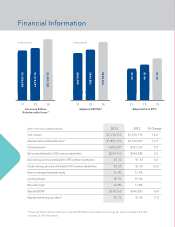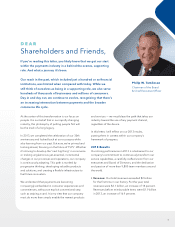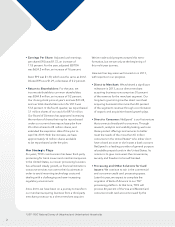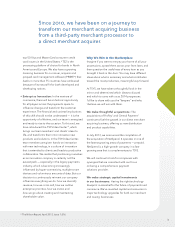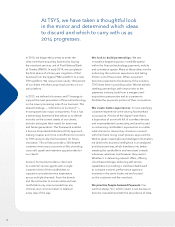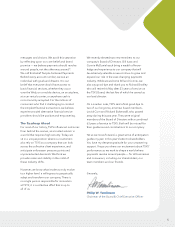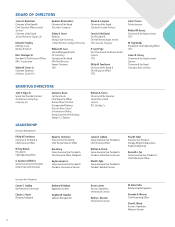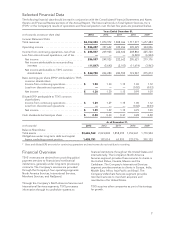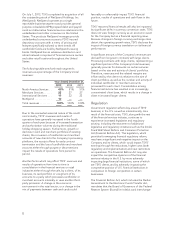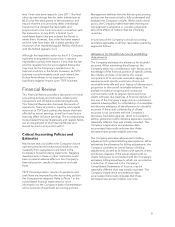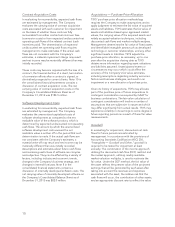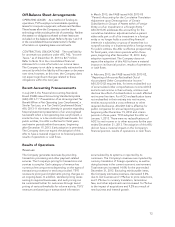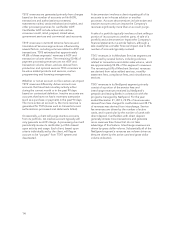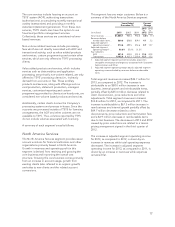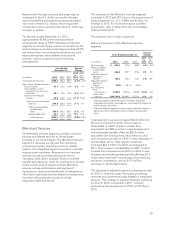NetSpend 2013 Annual Report Download - page 11
Download and view the complete annual report
Please find page 11 of the 2013 NetSpend annual report below. You can navigate through the pages in the report by either clicking on the pages listed below, or by using the keyword search tool below to find specific information within the annual report.
fees. Final rules were issued in June 2011. The final
rules cap interchange fees for debit transactions at
$0.21 plus five basis points of the transaction and
require that the amount of any debit interchange
transaction fee charged be reasonable and
proportional to the costs incurred in connection with
the transaction. In July 2013, a federal court
invalidated these rules and ordered the Board to
revise them. However, that order has been stayed
and the rules have been left in place pending the
resolution of an expedited appeal filed by the Board
with the federal appeals court.
Although this legislative action by the U.S. Congress
had been anticipated for some time, it remains
impossible to predict the impact, if any, that the law
and the regulations to be promulgated thereunder
may have on the Company’s operations or its
financial condition in the future. However, as TSYS’
business is predominately credit card related, the
Durbin Amendment is not expected to have a
significant negative impact upon TSYS’ business.
Financial Review
This Financial Review provides a discussion of critical
accounting policies and estimates, related party
transactions and off-balance sheet arrangements.
This Financial Review also discusses the results of
operations, financial position, liquidity, and capital
resources of TSYS and outlines the factors that have
affected its recent earnings, as well as those factors
that may affect its future earnings. The accompanying
Consolidated Financial Statements and related Notes
are an integral part of this Financial Review and
should be read in conjunction with it.
Critical Accounting Policies and
Estimates
Risk factors that could affect the Company’s future
operating results and cause actual results to vary
materially from expectations are listed in the
Company’s forward-looking statements. Negative
developments in these or other risk factors could
have a material adverse effect on the Company’s
financial position, results of operations and cash
flows.
TSYS’ financial position, results of operations and
cash flows are impacted by the accounting policies
the Company has adopted. Refer to Note 1 in the
consolidated financial statements for more
information on the Company’s basis of presentation
and a summary of significant accounting policies.
Management believes that the following accounting
policies are the most critical to fully understand and
evaluate the Company’s results. Within each critical
policy, the Company makes estimates that require
management’s subjective or complex judgments
about the effects of matters that are inherently
uncertain.
A summary of the Company’s critical accounting
estimates applicable to all four reportable operating
segments follows:
Allowance for Doubtful Accounts and Billing
Adjustments
The Company estimates the allowance for doubtful
accounts. When estimating the allowance, the
Company takes into consideration such factors as its
knowledge of the financial position of specific clients,
the industry and size of its clients, the overall
composition of its accounts receivable aging, prior
experience with specific customers of accounts
receivable write-offs and prior history of allowances in
proportion to the overall receivable balance. This
analysis includes an ongoing and continuous
communication with its largest clients and those
clients with past due balances. A financial decline of
any one of the Company’s large clients could have a
material adverse effect on collectability of receivables
and thus the adequacy of the allowance for doubtful
accounts. If the actual collectability of clients’
accounts is not consistent with the Company’s
estimates, bad debt expense, which is recorded in
selling, general and administrative expenses, may be
materially different than was initially recorded. The
Company’s experience and extensive data
accumulated historically indicates that these
estimates have proven reliable over time.
The Company estimates allowances for billing
adjustments for potential billing discrepancies. When
estimating the allowance for billing adjustments, the
Company considers its overall history of billing
adjustments, as well as its history with specific clients
and known disputes. If the actual adjustments to
clients’ billing are not consistent with the Company’s
estimates, billing adjustments, which are recorded as
a reduction of revenues in the Company’s
Consolidated Statements of Income, may be
materially different than was initially recorded. The
Company’s experience and extensive data
accumulated historically indicates that these
estimates have proven reliable over time.
9


